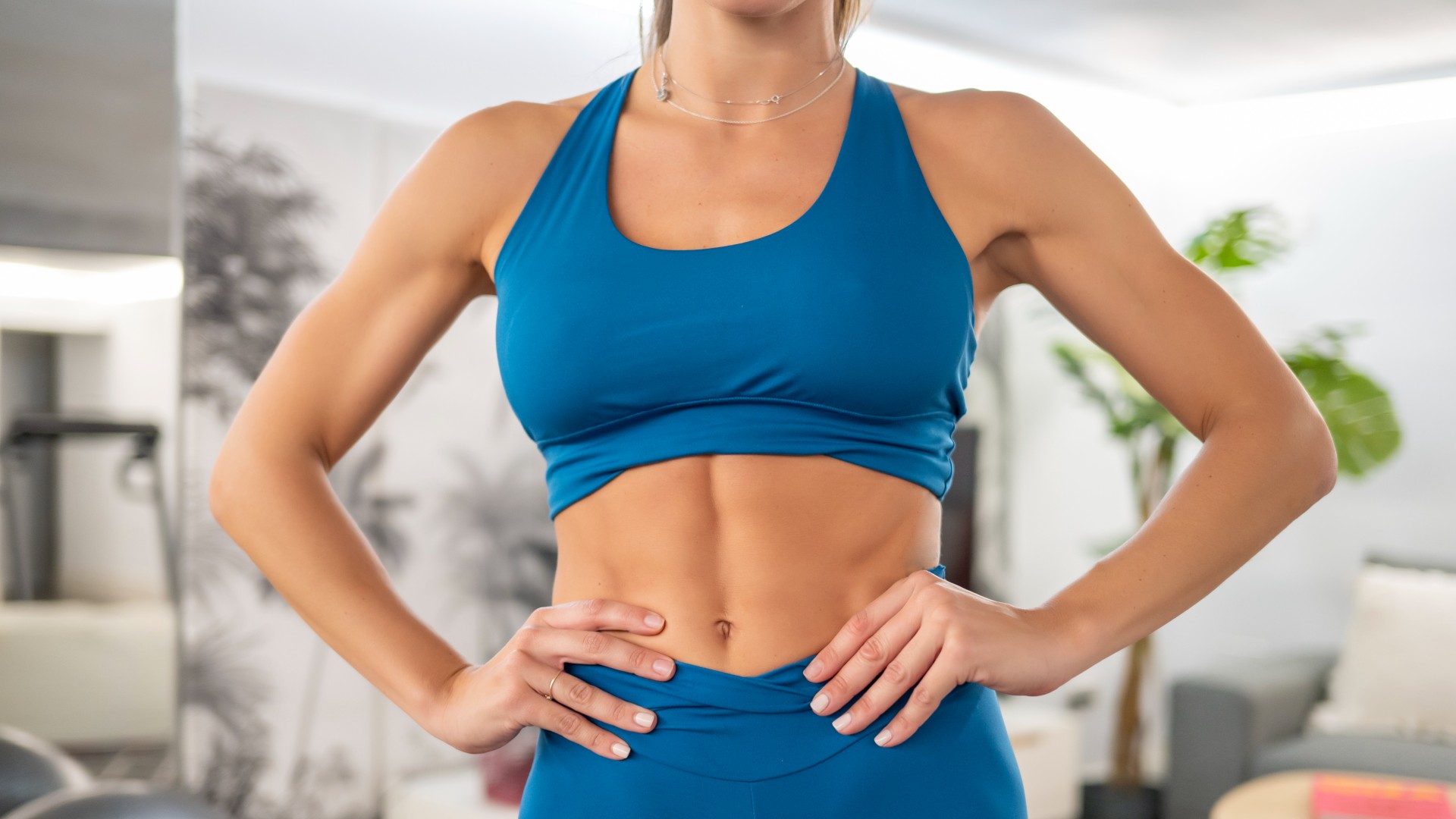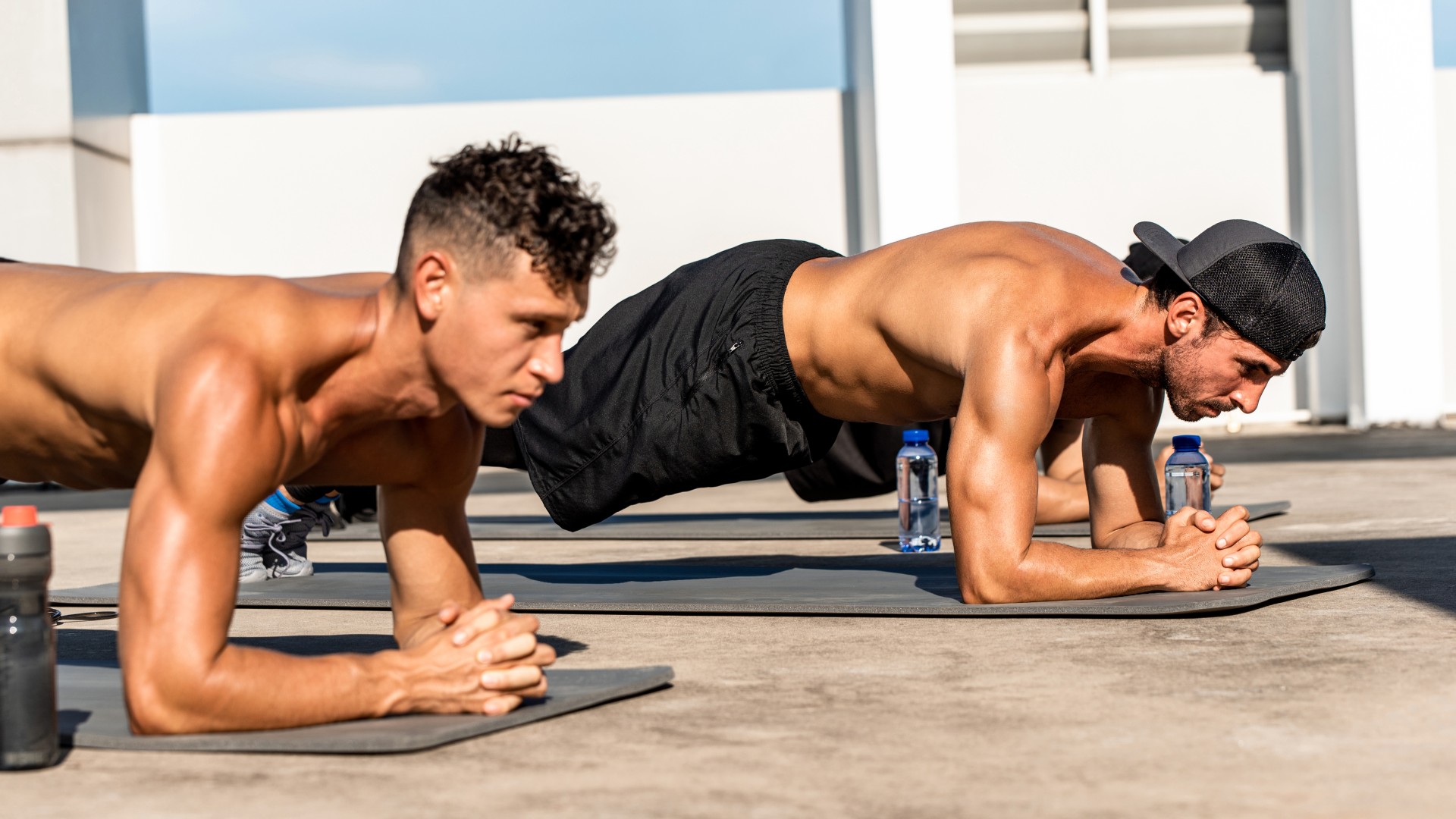
Build bulletproof core muscles using these three exercises without weights, say the calisthenics instructors known as the Calisthenics Family.
In their eyes, these are the three best calisthenics core exercises you can do as a calisthenics beginner, especially if you plan to try more bodyweight workouts as part of your exercise routine.
I’m a huge fan of all three moves, and I think you will be too.
Here’s how to do them, the benefits of a calisthenics routine and a demo of each core exercise if it’s your first time.
Watch the Calisthenics Family’s 3-move core workout video:
The guys at Calisthenics Family recommend these moves if you think your core may not yet be strong enough to handle a full calisthenics routine.
While bodyweight-based workouts can be scaled to be beginner-friendly, they still rely heavily on the core muscles for trunk stability, balance and overall strength, so going into a calisthenics routine with a foundational level of core strength is highly recommended.
1. Hollow body hold
When learning how to do the hollow hold, I typically instruct clients to think about creating a soft banana shape with the body, with arms extended alongside the ears and the legs extended away from the body.
For this variation, you’re instructed to start from a seated tuck position, then move into extension. Avoid arching your back and “keep your lower back in contact with the ground.”
The guys recommend holding the position for 30 to 60 seconds.
2. Hanging leg raises
They might look intimidating, but hanging leg raises are actually more beginner-friendly and (in my opinion) beneficial to your overall strength, engaging the upper body and testing grip.
You’ll need a pull-up bar (or similar) that you can hang from, and if your grip strength hasn’t developed yet, some chalk or gloves may help you hold onto the bar.
Grip the bar with hands shoulder-width apart and fully wrap your thumbs around the bar. You’ll start in a dead hang position, simply meaning you'll be hanging your full weight from the bar without your feet touching the ground.
Notice how this feels in your shoulders and arms. If you prefer, slightly pull your shoulders down as if you’re about to initiate a pull-up; this should feel less intense.
Next, raise your legs to hip height, keeping them straight with toes pointed. Pause, then lower them with control. Aim for 4 sets of 8 to 12 reps.
3. Reverse leg raises
For this exercise, find a box or bench you can lie on, stomach down. Your whole torso from shoulders to hips should be supported. Position your hips on the edge of the box, then extend your arms away from you, keeping your biceps close to your ears.
The guys recommend starting with your legs in a tucked position with thighs against the side of the box. Next, extend your legs behind you while maintaining a straight line from hips to toes. Return to the starting position. Aim for 4 sets of 10-15 reps.
Is 20 minutes of calisthenics enough?
We’ve been conditioned to believe that a workout isn’t worth the chalkboard it's written on unless it’s more than 30 minutes of hard graft. Trust me, you can get more than enough from a 20-minute calisthenics workout.
If you’ve spotted the more advanced style of calisthenics training — people pretty much defying the laws of physics as they hold their bodyweight in crazy positions — you’ve probably already guessed core strength is integral.
But it’s a common misconception that you must go into calisthenics superhuman strong or that it can't be suitable for those new to it.

Everyone is a beginner at some stage, but I encourage you to build a foundational level of strength, including core work, with beginner workouts. Adding several mobility routines a week will also pay dividends when it comes to developing your calisthenics skills and having enough freedom in your body to move well.
Exercising with your bodyweight improves functional relative strength while strengthening muscles, joints, ligaments and bones. Don’t worry if you’re unfamiliar with the exercises above, as the Calisthenics Family takes you through them.
Practicing these moves will help you build core stability, strength, control and endurance — all essential for calisthenics. And before you get stuck in, I recommend a quick refresher on how to engage your core muscles, which will help you balance and keep your lower back safe.
Learning to move with just your body weight can improve proprioception (the awareness of your limbs in space) and help you contract your muscles properly and fully during movement.
More from Tom's Guide
- I've been walking 5K every day to boost my metabolism and build mental stamina — here's why I don't count steps
- No gym? Use this 30-minute walking workout instead to build a stronger upper body and core and boost your metabolism
- You can start realigning your hips in just 3 exercises — according to a yoga teacher and strength coach







